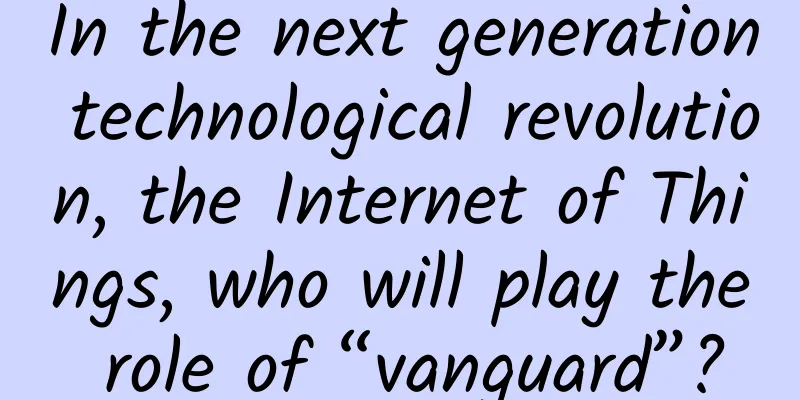In the next generation technological revolution, the Internet of Things, who will play the role of “vanguard”?

|
The Internet of Things (IoT) is widely regarded by the industry as the next technological revolution after the Internet, and is said to be the dawn of a new era of wearable devices, smart homes, self-driving bikes, smart factories, smart cities, and more. The Internet of Things (IoT) means the Internet and the interconnection of all things with accessible devices. It combines the potential advantages of the industry: cheap and widely available bandwidth, low-energy microprocessors, and big data analysis tools. The development and growth of the IoT is closely related to two key technologies: edge computing and machine learning.
The continued evolution of edge computing The number of IoT access endpoints, such as connected devices, sensors, and gateways, is growing exponentially. IT industry analyst Gartner predicts that the growth rate of IoT terminals will be about 30%, and the total number of IoT access devices will reach 20 billion by 2020. The explosion of access devices has brought new challenges to data analysis and data processing. These terminal devices will generate a large amount of data. If this data is transferred to the cloud for data management, analysis, and decision-making, it will not only be expensive and inefficient, but it may also hinder the development of network infrastructure, resulting in network latency issues. Therefore, edge computing and edge analytics are playing an increasingly prominent role in large-scale IoT deployments. In edge computing, computing power is decentralized and closest to sensors and devices. The data of devices comes from the edge of the network, and the data analysis and processing work is completed at the edge of the network, rather than on a centralized server or cloud. Its advantages include: the ability to effectively support real-time applications and a reduced burden on infrastructure because most of the data is processed at the edge network and only necessary data is sent to the cloud for further processing and storage. This does not mean that edge computing will conflict with traditional data centers and cloud computing. On the contrary, edge computing is more likely to coexist with cloud computing to distribute computing power and workloads to where it makes the most sense. Sensor data will be collected and processed on the edge gateway, and edge analysis can use rule-based algorithms. Filtered data can be sent to the cloud, aggregated with data from other sources, and then fed back to the cloud's analysis engine to generate a model that can be sent back to edge analysis. Machine Learning With the rise of the Internet of Things, a technology that can form a good complement to edge computing is machine learning. Often mentioned together with artificial intelligence, machine learning refers to the method of generating automatic analytical models that do not need to be explicitly programmed by humans. Although the knowledge of machine learning has been available for decades, it is only in recent years that the development of computing power has been able to meet the needs of machine learning. As computing power gets better, machine learning will be increasingly integrated into IT architecture, especially in cloud and edge computing. Machine learning can not only centralize analytical functions in the cloud, but also greatly improve the efficiency of edge analysis. With the development of IoT adoption and the explosion of data, edge computing and machine learning will play a key role in the future IoT architecture. The three major public cloud service providers AWS, Microsoft and Google are all committed to integrating edge computing and machine learning into their products, providing machine learning as a service on their cloud platforms. AWS and Microsoft have already launched related edge computing software, which can run on chip vendors' systems (SOC) or on edge gateways. As with all new technologies, only time will tell how these technologies will play out, but one thing is clear: the era of the Internet of Things is coming, and edge computing and machine learning are two essential protagonists of the Internet of Things era. |
<<: The official version of PCI-E 4.0 specification is here! Bandwidth doubled again
>>: ICANN to replace Internet Domain Name System (DNS) encryption keys for first time
Recommend
It may be too early to claim that 5G package user development has cooled down
[[384501]] The three major operators all released...
How 10 popular SD-WAN startups survive in the cracks
The SD-WAN market is very hot. Large enterprises ...
edgeNAT Hong Kong VPS host simple test
We have shared edgeNAT several times in the tribe...
WiFi signal is not ideal? Check whether the network equipment is deployed correctly?
AP is the most commonly used device for building ...
Under the dual system of security and safety protection, Ruishu Dynamic Security Hyper-convergence helps enterprises implement "three transformations and six defenses"
In order to further strengthen the security of my...
6 considerations for new IT leaders in digital transformation
[[397841]] The journey of digital transformation ...
HostYun Los Angeles CN2 GIA line AMD series VPS simple test
We have shared information about VPS hosts in var...
Also talking about old friends: The return of Nokia
[51CTO.com original article] Chinese people like ...
The latest progress of LTE-5G deployment in Asia Pacific in July: 24 commercial 5G networks have been launched
Recently, GSA announced the latest progress of LT...
In-depth understanding of classic load balancing cases
Preface I have nothing to do so I write an articl...
How to solve the voice delay problem after core network upgrade
picture After an operator upgraded its core netwo...
6G is not just a gimmick, 5G still has problems
Faced with the huge demand of nearly 800 million ...
Hacker tools can directly crack iPhone 12, which is the last thing Apple wants to see
[[348473]] This is definitely not good news for A...
Top 10 predictions for the IoT industry in 2018
The IoT industry had a brilliant year in 2017. So...
HostYun: Hong Kong CN2 GIA line VPS monthly payment starts from 22 yuan, AMD+M.2 SSD high performance
Recently, someone is looking for a Hong Kong CN2 ...









